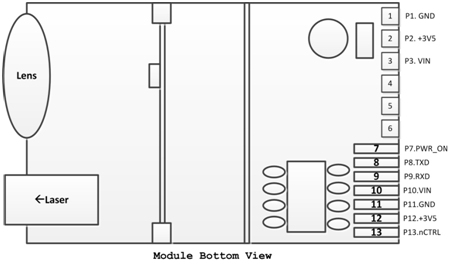After planting tomato, the level of income mainly depends on whether the management is scientific and meticulous. Only when the scientific management is based on creating the most suitable environmental conditions for tomatoes, can we achieve high yield and high efficiency.
Sunny days should be ventilated. When the temperature rises to 30°C, the top slits should be ventilated, and the vent size should be within 5°C after the temperature is lowered. At 22°C, close the vents and cover the grass before sunset. The minimum temperature should not be lower than 12°C before exposing in the morning.
Snowy days should pay attention. Cloudy nights are covered with appropriate ventilation. When the snow is cleared, it is timely to clear the snow. At noon, it is appropriate to expose the light. At night, it must be covered. The grass cover must be covered with a cold film. Continuous cloudy, sunny days after snow, must cover the shade, not ventilation, so that the temperature of the greenhouse slowly increased, excessive heating, plants can easily cause wilting. Yin and snow days, prone to disease, to spray medicine to prevent disease, spray medicine when adding 25 grams of urea, 20 grams of potassium dihydrogen phosphate, for the tomato to add nutrients. When the temperature in the cloudy snow canopy is too low, it can be heated in an iron stove to raise the temperature and prevent freezing.
Strengthen fertilizer and water management. When the first nut size walnut, the first top-dressing watering, chase three yuan compound fertilizer 15-20 kg per mu, after the second and third fruit and other fruit spikes to the size of the walnuts are chasing once Fertilizer, each tract of urea 10-15 kilograms, 8-12 kilograms of potassium sulfate, generally with water fertilizer. Watering should be conducted on a sunny morning. At noon, the air outlet is opened for ventilation and dehumidification, which can effectively prevent the occurrence of diseases. Low-temperature dark irrigation under the film, the amount of water to be less, to prevent too much water caused by excessive temperature drop, affecting the normal growth of tomatoes.
Reasonable pruning. Greenhouse sheds generally use single-stem twigs, leaving only one main culm and all side branches removed. Side branches should be selected on sunny mornings, which is beneficial to wound healing. When the first ear is green (when the fruit grows to the maximum and the top of the fruit turns from green to white), the old leaves under the first ear are removed, and when the second ear is green, the old leaves under the second ear are removed. And so on. This is conducive to ventilation and light transmission, reducing the ineffective consumption of nutrients and preventing the spread of diseases. After the main culms of the overwintering pod are cultivated to 6-7 ears, leave 2-3 leaves at the top of the ear to pick up the heart, and start to set aside branches on the culm. After harvesting the main culm, if each tomato is harvested, All produce side branches, then leave a strong side branch at the base and cut the old branch above it. The second pod can assemble 5-6 layers of fruit.
Flower protection. In winter, the temperature is low and the light is weak. Tomatoes are not easy to set fruit, so it is necessary to preserve the fruit. It is best to spray flowers with a concentration of 25-50 mg/kg of anti-dropping agent (tomato spirit) when there are 3-4 flowers in one inflorescence, and to control gray mold with 0.1% of 50% of quick-inking during spraying. . The use of anti-droplet spray is less labor-intensive than 2,4-D, and it is less prone to phytotoxicity, but 2,4-D must not be sprayed, otherwise it is prone to phytotoxicity.
Thinning and thinning fruit. Tomato cultivation also involves thinning and fruit thinning, because the result of one spike is too much, the fruit size is different, and the commodity is poor. The fruit-type varieties have 3-4 fruits per panicle, and the middle-fruit type varieties have 5-6 pieces of fruit per panicle. The first and second layers can be appropriately left to prevent falling. Stay fruit is generally "the head to the tail to stay in the middle", that is, the first fruit does not stay behind the small fruit, malformed fruit does not stay, so that the size of the same fruit, good merchandise.
Industrial Laser Distance Sensor
Industrial Laser Distance Sensor, we also call it secondary development laser distance module, which support TTL level and CMOS. The laser range sensor can be widely used in professional surveying, mapping, construction, robots, hunting arrows, industrial monitoring and automated measurement applications in electricity, transportation, etc. Our laser distance module supports data communication with RS232, USB with a simple adapter. The results of laser distance sensor can be evaluated with Arduino. We are always looking ahead, hoping we can make every measurement simple in life!

Parameters of M703A:
|
Accuracy |
±1 mm (0.04 inch) |
|
Measuring Unit |
mm |
|
Measuring Range (without Reflection) |
0.03-60m(150m can customize) |
|
Measuring Time |
0.125~3 seconds |
|
Laser Class |
Class II |
|
Laser Type |
620-690nm, <1mW |
|
Size |
45*25*12mm (±1 mm) |
|
Weight |
About 10g |
|
Voltage |
DC2.0~3.3V |
|
Electrical Level |
TTL/CMOS |
|
Frequency |
8Hz(20Hz can customize) |
|
Operating Temperature |
0-40 ℃ (32-104 ℉ ) |
|
Storage Temperature |
-25~60 ℃ (-13~140 ℉) |
Laser Distance RS232,Arduino Distance Module,Laser Module RS232
Chengdu JRT Meter Technology Co., Ltd , https://www.infrareddistancesensor.com